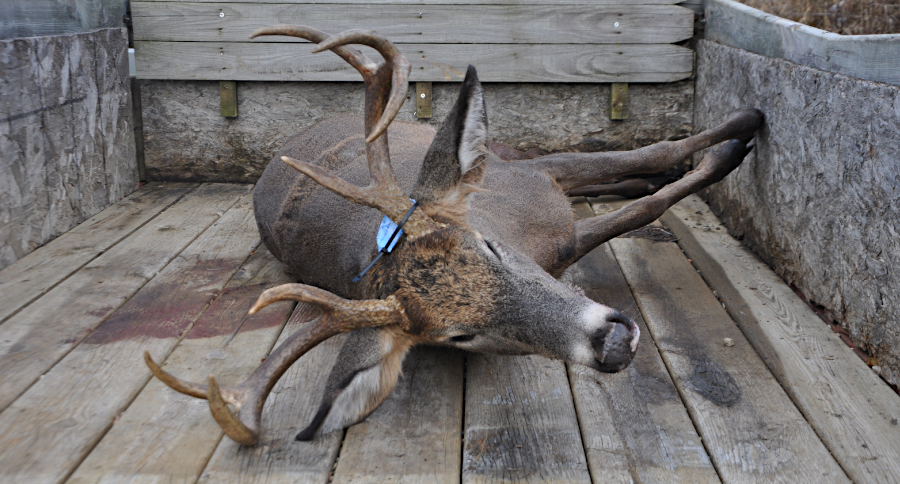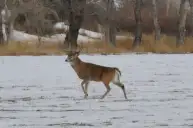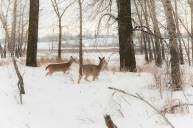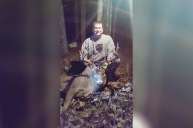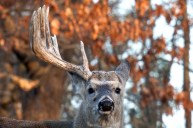Should you practice culling in your deer management efforts?
It's one of the most controversial topics in whitetail deer hunting. Should you use selective harvest to manage for quality deer by harvesting select animals with smaller antlers from the deer herd?
There are a lot of arguments both for and against taking out cull bucks. But do any of them have any merit? Can practicing this help you produce more and bigger mature bucks?
Let's look at the question a little more in depth and look at some of the antler genetics stories out there to see if culling really does make for better hunting.
What is a cull deer?
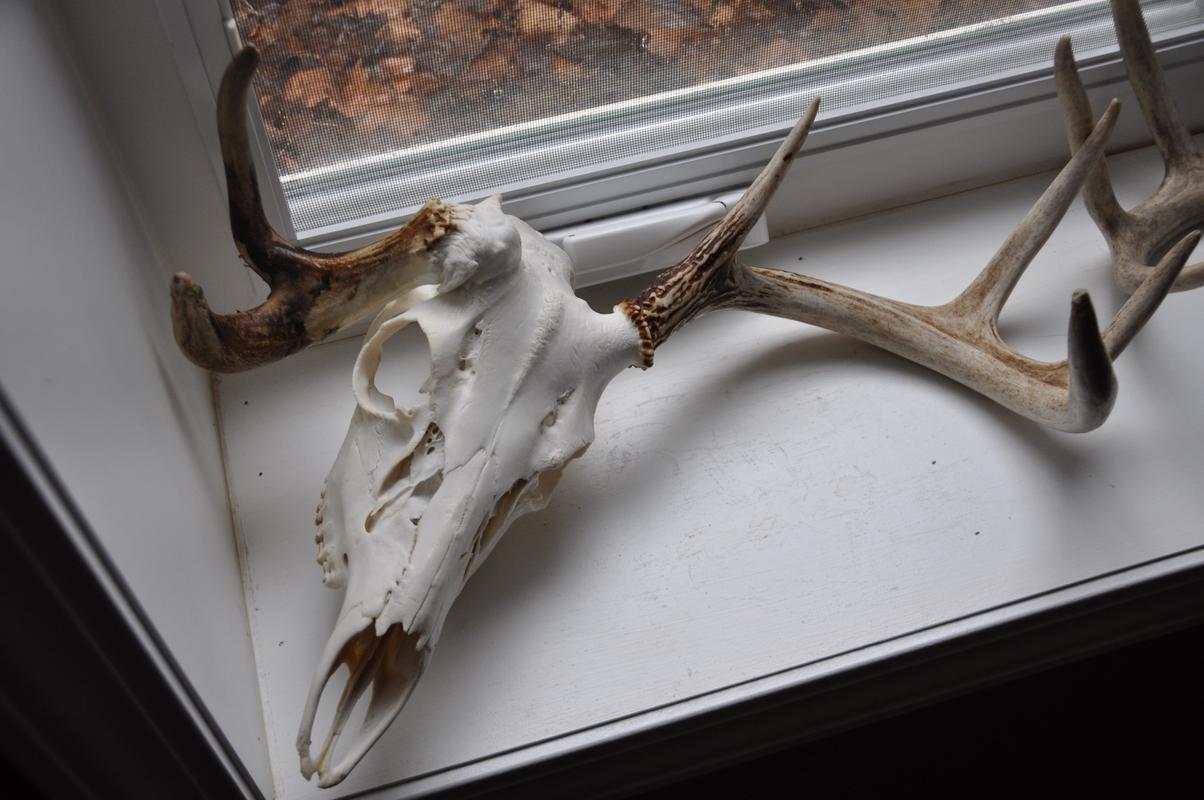
Travis Smola
Before we dive more in depth, let's go over exactly what we're talking about so there's no confusion.
There are some deer hunters who believe you can help improve the antler quality in your area by taking out so-called "inferior deer" with antler characteristics that are less desirable or bucks that have supposedly reached their peak antler size.
For instance, for years the phrase "once a spike, always a spike" was used to justify the harvest of 1.5-year-old bucks with the belief they would never amount to anything more.
These days, when you hear hunters talking about cull bucks, you'll likely hear them referring to bucks with eight antler points or less, and usually between 3.5-4.5 years of age. On rare occasions, you'll hear of hunters culling yearling bucks that don't have a specified minimum number of points. Sometimes instead of "cull buck," they'll instead refer to them as "management bucks."
You will also hear about people culling bucks that have odd or goofy antlers that are lopsided or strangely non-typical, but this doesn't seem to happen as often. Keep in mind all of this is quite subjective from hunter to hunter.
The argument against culling
There seems to be something of a shift away from culling recently because there are some studies emerging that show the effects of the practice to be either minimal or void. The Quality Deer Management Association recently published the results of a long-term study done on three areas of a massive Texas ranch in which three different approaches were taken to culling over the span of about nine years.
In one area, culling was aggressive, with yearlings with less than six antler points being taken out. The second area saw a more moderate approach with 2.5-year-old bucks with less than eight points being harvested and 3.5-4.5-year-olds with less than nine points being taken out.
They also had a control area with no culling at all. In all three areas, bucks were captured during helicopter surveys and loads of scientific data was recorded, including DNA tests.
What they found was that the intensive culling area resulted in a wild imbalance in the deer population's buck-to-doe ratio of nearly 1:6, and the moderate cull area saw no benefits to antler size at all.
Using the DNA samples, they were able to produce detailed family trees of the deer in the area. This allowed the researchers to come up with a "breeding value" system which assigned each buck a value based on the quality of antlers produced by the bucks he sired. What they found is that this value didn't always correlate with the antlers. To quote the QDMA:
"If culling is to work, the criteria would need to remove bucks with lower breeding values while leaving bucks with higher breeding values to make more fawns. But the family trees revealed a brick wall: antler size was not correlated to breeding value. Therefore, you cannot predict the breeding value of a buck by looking at his antlers."
Now, let's be fair here. This was one ranch in Texas. Hunting in the Lone Star State is going to be drastically different than in Michigan where I live. In fact, I know many hunters who have never even SEEN a 4.5-year-old buck, let alone a 3.5 or even 2.5-year-old one.
It's just a totally different environment, including prevalent hunter attitudes and traditions that are vastly diverse. Seasons are drastically different. You could say what works for Texas isn't going to necessarily work for Michigan and vice versa.
However, let's circle back to that "once a spike, always a spike" argument. This is a saying that has already been debunked numerous times over the years through numerous studies. It doesn't take much online searching to find photos of spike bucks that later blossomed into Boone & Crockett class whitetails.
Many scientists say most spike bucks are likely late-born fawns that just haven't had enough time to develop branching antlers like their brothers and cousins. That seems to make sense. I can also tell you from my own experience, while I often see spike bucks every year, I have never seen one older than 1.5 years old. Not that it doesn't ever happen, because I'm sure it does, but it seems to be exceedingly rare.
Scientists say a buck's first set of antlers aren't a good indicator of what he might become. Citing that study QDMA reported on again, the researchers encountered many bucks with antlers that fell under the cull minimums that were sired by bucks most hunters would agree were not "inferior deer."
I think we can safely say at this point that judging an animal off his first set of antlers likely isn't a good measuring stick, at least scientifically.
Other cull factors
There are a few other things I don't often hear discussed when it comes to culling of bucks. For instance, most scientists agree you need to manage does as much as you do the bucks. If we're truly talking about culling out bad genetics here, that would mean having to cull out does who may also be carrying genes that don't lead to large antlers in their fawns. The problem therein is obvious. How do you tell which does have bad genetics?
That QDMA study I mentioned earlier also looked at nutrition. Deer antlers are the fastest-growing bones in the world, developing over the course of a summer. Deer need a lot of great nutrition to help support antler growth in this time. So, is it surprising when deer in agriculturally rich areas like Iowa grow bigger antlers than deer who must find natural forage with less nutritional value in a state like Florida?
That same QDMA study found that a significant amount of rainfall in the seventh year of the study led to larger deer antlers that year. More rainfall equals more forage, which means the animals don't have to expend as much energy finding food. As a result, they fatten up and their bodies can use the excess energy for other things, like growing big antlers. It just makes sense. Perhaps planting more food plots is a better solution than culling deer?
I would say hunting pressure also plays a part in determining how big bucks get. For a short time, I lived in Wyoming, the least populated state in the continental United States. I was consistently impressed with the number and size of the bucks I saw during my short time living there. Michigan has over half a million hunters every season harvesting hundreds of thousands of deer. Wyoming has less than 100,000, and they harvest only around 60,000 animals a year.
By default, you have a more varied age class because less animals are harvested. More younger and moderate-sized bucks survive to an older age and get the chance to show their true potential.
Are hunters who cull making excuses?
Before I dive into this, let me just say that I truly do believe there are hunters out there who probably believe culling works. Maybe you're one of them. If you think it's working for you, more power to you.
But I've also started to see some doubt seeping in for some people. More than once I've heard people say that hunters who cull just want to shoot a deer and are trying to justify a harvest of a smaller animal.
I can't argue with that. I have watched a ton of videos where someone is justifying their harvest of a 3.5-year-old 8-pointer as "this is a management deer." They often say it repeatedly. I've seen a few videos where it does seem a bit disingenuous.
This year I harvested a 7-point buck. He's not especially tall. His G2 tines were around seven inches long. But he had a 19-inch outside spread and a decent sized body. It's not the biggest deer in the world, but it was a buck I just couldn't pass up, mostly because it's been six years since I last shot a buck and my freezer was entirely empty of venison.
Have I shot larger ones? Yes, I have. But I'm not making excuses. I wanted to shoot this buck the second I saw him.
It helped that this deer offered a perfect shot too. I'm very happy with my harvest. So much so that I already have him Euro mounted and hanging on my wall just feet from where I type this now.
Perhaps to end the culling debate once and for all, we as hunters need to take a little more pride in what we harvest. You shouldn't feel insecure and you shouldn't feel the need to excuse harvesting a deer.
If you feel the need to justify your harvest as "cull buck" every year, but inside you know that's a lie and you just wanted to shoot the deer, maybe you need to reexamine your hunting practices as a whole.
Life is too short to worry about what your fellow hunters will think of your harvest.
The bottom line
So, should you cull every year? Well, based on the recent scientific studies we've read, we would say the answer to that question is no. In some cases, it seems to hurt the deer herd more than it helps. Perhaps another study will pop up in another year with data to refute some of the more recent studies on deer culls.
Personally, I've never shot a deer and called it a "cull buck." I can only think of one scenario where I could have called it a deer cull. On my latest trail camera check, I had a young 6-pointer limping badly. It appears he busted his front leg. This is a deer I wouldn't normally shoot, but if I had encountered him during the season? Yeah, I would have put him down in a heartbeat, because it doesn't look like he'll make it through winter.
Other than that scenario, I will continue to pass on spikes and other young deer with so-called "inferior genetics." It certainly hasn't HURT my hunting to do this. If anything, the neighbors who shoot everything should thank me for not snatching venison out of their freezer by popping that young buck before he crossed the property line.
For me personally, culling bucks doesn't make a whole lot of sense. Science says it doesn't make sense and we'd be inclined to believe it. Our advice is to not judge a buck by his antlers.
As proof of that, look at the Luke Brewster buck. This massive animal became the new world record non-typical last year. But this animal started off life as a big typical. But then he tacked on well over 100 inches of antler his last couple years on his way to a staggering score of 320 5/8 inches!
The Brewster buck was an animal that most hunters would have been more than happy to harvest as a giant typical. And had someone done so, they would have never known the beast he became. It's at the least something to keep in mind before you shoot.
Now, we're not saying you should pass every medium-sized buck just because it might someday become world class. That's just silly. If that deer makes you happy, go ahead and shoot it.
Really what we're saying is to start trusting your instincts. If you think that buck in front of you needs another year, pass him. If you think he's topped out and should be culled, harvest him.
It's up to each person's personal preferences in the end.
For more outdoor content from Travis Smola, be sure to follow him on Twitter and check out his Geocaching and Outdoors with Travis Youtube channels.
NEXT: HERE'S WHY WE SHOULDN'T SHAME CROSSBOW HUNTERS
WATCH
